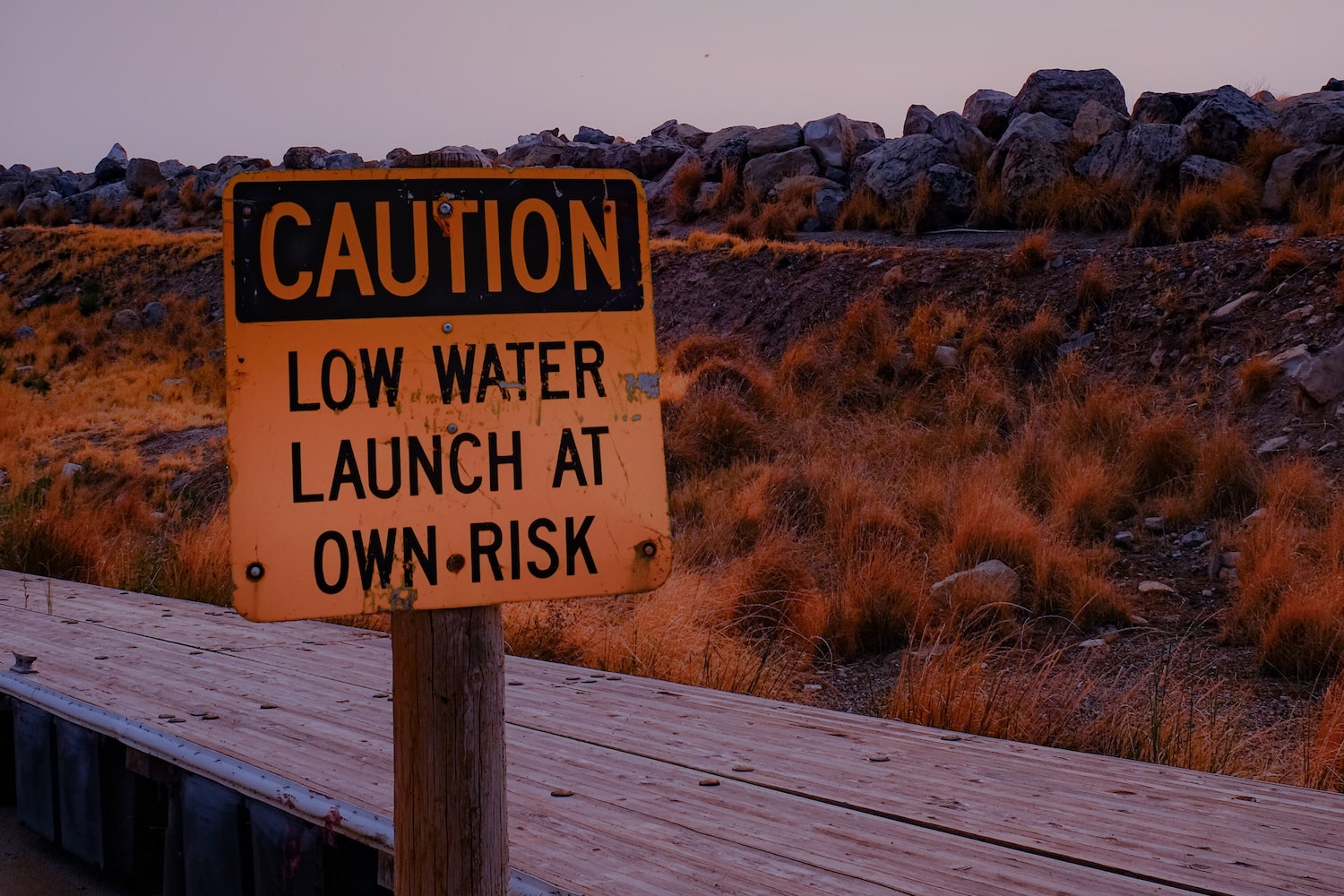
Utah’s Great Salt Lake has lost 73 percent of its water, and its rapid disappearance is threatening ecosystems, public health and the region's economy. Unless drastic measures are taken in the coming months, the Great Salt Lake could be lost completely within five years, a team of 32 scientists, conservationists and consultants warn in a new report. The Great Salt Lake is a critically important ecosystem for a myriad of species and is also responsible for $2.5 billion in economic activity annually. Additionally, water loss is exposing a layer of toxic dust on the lakebed which threatens the health of nearby communities.
Where has all the water gone?
The Great Salt Lake is 6.9 million acre-feet below the minimum healthy level and is continuing to lose over 1 million acre-feet of water annually. (For reference, one acre-foot of water is equal to about 326,000 U.S. gallons.)
Since 2020, excessive water diversions in the form of dams and canals have prevented the lake from taking in the streamflow it needs to sustain healthy levels, according to the new report. Over two-thirds of the streamflow that would naturally refill the Great Salt Lake is being diverted for farms, mineral extraction, home lawn irrigation and electricity production.
Climate change is not the primary cause of the lake’s perilous state, but it is intensifying the crisis. Utah is currently experiencing approximately 4 degrees Fahrenheit of warming due to human-caused climate change. Increased temperatures cause a decrease in runoff and an increase in evaporation, and scientists project that approximately 9 percent of the Great Salt Lake’s water loss is associated with climate change. Climate change is likely to continue exacerbating evaporation of streamflow, meaning that water loss due to warming is on a path to accelerate.

The socio-ecological impacts of a declining Great Salt Lake
The Great Salt Lake is already showing signs of imminent collapse. The lake has lost 60 percent of its surface area and 73 percent of its total water, and this level of water depletion makes the remaining lake water even saltier. The increased salinity is destroying the food web for keystone species like brine shrimp and brine flies, and the loss of those species will lead to the collapse of local wildlife populations and migratory birds.
A recent economic analysis showed that if the Great Salt Lake collapses, it would cost Utah around $2 billion annually and the area would lose over 6,600 jobs. Mineral extraction from the lake is already losing viability due to decreased water levels, and exposed dust from the lakebed is threatening agricultural productivity in the area.
The Great Salt Lake also contributes up to 10 percent of the snowfall in area mountains due to evaporation, so if the lake disappears, nearby economies and ecosystems that depend on ample snow will also be affected. Snowfall in nearby mountain ranges sustains 20,000 jobs and accounts for $1.8 billion annually in economic activity. Exposed dust from the dried areas of the lakebed are already being deposited by the wind onto nearby snowpack, leading to premature snowmelt.
Can the Great Salt Lake be saved?
The report calls for a rapid, coordinated education and intervention plan to decrease water demand and save the Great Salt Lake through robust and multifaceted conservation efforts. Current conservation proposals include recognizing the lake’s right to water by creating a binding agreement that allocates a certain amount of natural streamflow to the lake, ensuring its health and longevity.
The report also calls for federal, state, and local governments to work together through a variety of action plans that include increasing federal funds for conservation, coordinating water use agreements across state lines, authorizing temporary emergency water releases from reservoirs, activating state employees to provide residents with water conservation resources, establishing turf and lawn removal programs, and paying farmers for not growing crops or transitioning to less water-intensive crops.
Fostering trust and collaboration among residents, utilities, farmers, conservationists and government agencies is critical to implementing a plan to save the Great Salt Lake from collapse. In 2022, Utah’s state legislature earmarked $40 million for protecting and reviving the lake, and the most recent federal defense bill included provisions proposed by Utah Sen. Mitt Romney to address the Great Salt Lake crisis. Republican Gov. Spencer Cox has also proposed additional funding.
However, current projections show that in order to save the lake, Utah will need to immediately decrease the amount of water it uses by up to 50 percent, a massive feat that would require unprecedented levels of coordination and cooperation.
Images: Ruston Jones and Rob Martin via Unsplash

Mary Riddle is the director of sustainability consulting services for Obata. As a former farmer and farm educator, she is passionate about regenerative agriculture and sustainable food systems. She is currently based in Florence, Italy.














